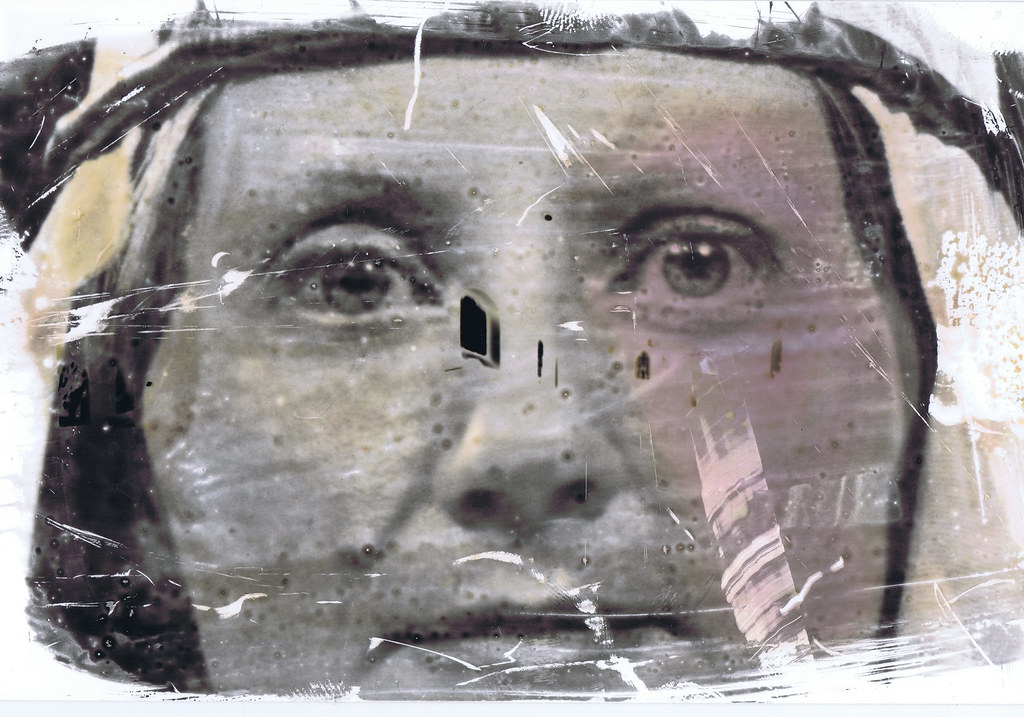#film production process
Text

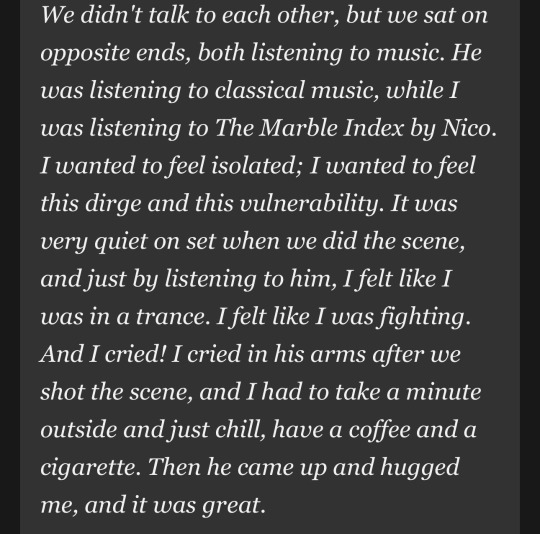
Saw someone say on twitter „luke experienced subdrop and needed aftercare“ and I haven’t stopped thinking about this video/interview/comment bc I REALLY hope the producers are aware how much their actors are doing for this show and are taking proper care of them (e.g. having competent intimacy coordinators).
#the whole filming process sounds very intense 🫣#like them not really rehearsing the argument scene and just screaming at each other 'doing what you‘d do in a real argument'#and yeah I get it 'thats acting' but there‘s so many actors who were worked to the bone#who brought vulnerability to the table bc it made a scene better and got taken advantage of#and with how much and how rapid the show is gaining in popularity; the upcoming netflix deal#I just hope the production stays clean and responsible#iwtv#interview with the vampire#luke brandon field#assad zaman#daniel molloy#armand#edit: I don’t really have a stance on whether or not that terminology is applicable and/or appropriate#I read it on twitter and I think its not too far out there w the way he described it
601 notes
·
View notes
Photo
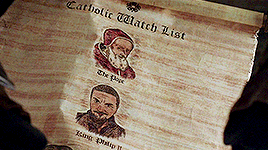

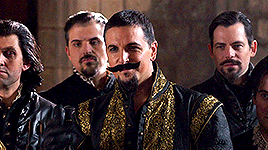
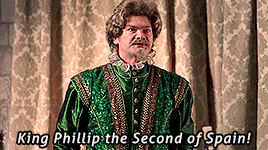
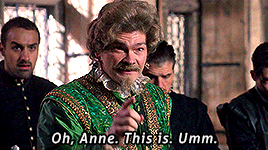
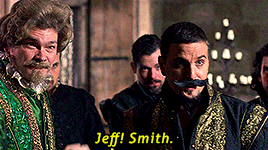

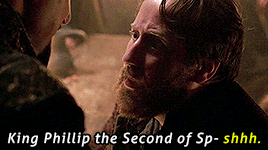
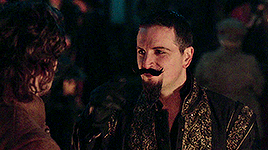

King Phillip the Second of Spain (and his fool-proof disguise) || Bill (2015)
Bonus:
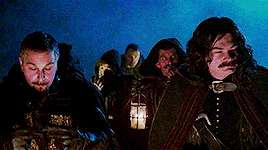
#bill#bill 2015#billedit#six idiots#myedits#in the process of doing this gifset my photoshop got flagged as not a genuine product#so now i get to uninstall adobe and hope it reinstalls without grief#(update i uninstalled adobe genuine and seems to be okay so far - will see how that goes)#filmtvdaily#films
495 notes
·
View notes
Text
get someone who looks at you the way scott thompson looks over at me while i'm filming behind the scenes for the buddy cole documentary
#(megaphone) THIS MEME IS MEANT IN THE PLATONIC SENSE GET YOURSELF AN OLD GAY MALE BESTIE#now that that's out of the way oh my god i'm rewatching the videos i got backstage at the pittsburgh show#and holy shit there are so many adorable moments i didn't even notice at the time bc i was just processing everything going on#but like for example when scott's walking off the stage after his set you can see the exact moment he sees me backstage#or when we're chatting about comedy in a group of people later and i start speaking he always looks so interested in what i'm saying#before we started production we were going back and forth about whether this should be fly-on-the-wall style or if i would be part of it#and at this point i'm so glad we decided i could be in it bc honestly it would be hard for me to not be part of this story#just bc of how the fact that it's me‚ specifically‚ filming impacts scott so much it's wild#all the way down to me saying something in conversation and him looking off to the side of the camera (where i am)#as though i'm saying the most important thing he's heard all day#ugh i miss scott i can't wait to see him again exactly 3 weeks from now
10 notes
·
View notes
Text
i keep seeing people criticising tv shows and movies by being like "i thought x character was bad but im NOT BLAMING the actor i think the actor is GREAT and WONDERFUL i blame the WRITERS and DIRECTORS"
usually this is directed at female characters and characters of colour and like while i understand the impulse to not dunk on actors and actresses who are more likely to be receiving really shitty hate comments just for existing i do think a) the attacks on writers and directors are also really mean and personal sometimes? and also b) this feels incredibly performative
#my peak moment of this is someone who commented on annabeth being black in the percy jackson series#and said it ruined the entire point of her character and made the show basically unwatchable from the get go#and then added “but no hate to leah! shes an amazing actress she's gonna be fantastic!”#and like. fantastic at what. what does that mean#thats an extreme example usually when i see this it's more like#idk like the comment i saw about ghosts cbs which said sam was too cheerful but that rose mciver portrayed her perfectly#and had a lengthy diatribe about how a character being perky and happy was irredeemably terrible writing#and like#how is the actress not a part of that?#what do you think her job is?#her job is not just having a face and saying words in any even halfway decent production the actors are *part* of the writing and direction#film media is a collaborative process#and you can hate the result but like youre rarely gonna be able to single out the one person who caused a thing you hate#and also also. its super obvious that people are just adapting to it being socially less acceptable to bully actors on social media#writers and directors however you can still get away with harassing
13 notes
·
View notes
Text
say what you like about having your vocabulary ruined by bertie wooster but at least whenever I'm indecisive from now on I'll always be able to say that I'm letting 'I dare not' wait upon 'I would' and make everyone think I'm cultured
#that and 'like quills upon the fretful porpentine'#live in my head rent free#i DID read macbeth in school but wouldn't have remembered that line#tbf i hope one day to be able to understand shakespeare plays#my j&w brainrot is so bad rn that i got the complete works on audible#started a midsummer night's dream#couldn't really follow it#bought an annotated copy but haven't got into it yet#people who are really into shakespeare say you have to see it performed bc just reading won't do the trick#but my auditory processing is real bad and combine that with the fact that the language is so different#it's a bit dense for me (or maybe i'm a bit dense for it)#also i can't find a filmed production#anyway um#jeeves and wooster#jeeves books#that's where this post started yeah i remember now#i did NOT read hamlet in school and there's always been a feeling hanging over me that i really should#you're SUPPOSED to have read hamlet even if only under duress#universal high school experience reading hamlet and not appreciating it it seems
7 notes
·
View notes
Video
Spectral Hospitality/Strange Strangers by Russell Moreton
Via Flickr:
The uncanny/uneasy sense of welcome. Life forms are irreducibly uncanny, is as much that the more we know about them the stranger they become. Tuning. Timothy Morton. Be not inhospitable to strangers, lest they be angels in disguise. Lovers at The Gun Club. Jackie Leven.
#Helena Eflerova#Ecclesia#Anima/Animus#alternative processes#film#analogue#production stills#medium format#liquid light#reclaimed#altered states#surface#emotions#eyes#historical#presence#portrait#Russell Moreton#visual art#Hasselblad#501CM#visual fine art#spatial practice#research creation#ecology of experience#useless flickr uploader#Colin Renfrew#Jackie Leven#Timothy Morton#Hospitality
2 notes
·
View notes
Note
hey Tunes, do you know whats happening in the Miguel tag? I'm too afraid to check it out myself so thought I'll ask you.
essentially the atsv screenplay was released two or so days ago, which you can read in its entirety here, and there has been valid crirtique regarding the language utilised to describe Miguel within said screenplay, including allusions to bloodlust and the screenplay describing him as an animal twice I believe.
#insofar as my own personal thoughts this does really make me concerned that theres a real lack of consciousness to#emphasizing miguel's anger and the nature of his being in that he's half spider as primary tenets to his character#its deeply concerning to me that regardless of whether the authorial intent was more in vein of providing direction to animators#or was an attempt at shorthand for his emotional state to emphasize his threat AS an antagonist#that this kind of language pertaining to a moc wasnt examined more closely and that it wasnt something picked up upon throughout the#creative process (because lbr Lord + Miller + Callaham are notorious for creatively echoloating their way to the final product and even the#screenplay we HAVE has elements which never made it to the film that exists right now)#its concerning that this mindset on part of the creatives (esp in contrast to Spot as others have pointed out who doesnt contain the same#kinds of language descriptors) that this is something that appears to have been integrated carelessly and without consideration as to just.#the implications of always referring to a moc within bestial terms and characterising his emotions as such. and i think thats something#which is important to point out and criticise as part of the authorial intent (which is what i read the screenplay AS yknow)#but yeah tldr theres been a lot of issue taken with the language used there and i think its a very warranted point to make critique of#and its one i personally hope the creatives HEAR and reflect on. because theyve shown they can do so in regards to characters like Peni or#elements like getting the texture of Miles' hair wrong at first#ask games#anon
15 notes
·
View notes
Text
A little number I wrote many years ago for my Sister's Wedding Day.
Happy Wedding Anniversary Sandra & Brian x x x
#royalty free music#film#stock music#production music#classical#classical music#music#theatre#podcast#advertising#wedding#wedding music#wedding procession#wedding processional#pipe organ#organ#church organ#church organist#score#wedding dress#wedding gown#bridal gown#bride#bridal march
2 notes
·
View notes
Text
Seeing people getting worried about the FNaF 2 movie having a release date of fall 2025 and like. I'm not gonna lie I'd feel weird if they got a sequel out only a year after the FNaF movie released.
#ramblings#i know this series has a track record or weirdly fast sequels & admittedly idk much abt the film production process#but like. 2 years after the first is not an insane amount of time#the first one found itself in development hell bc the initial studio didnt agree with what scott wanted to do#and then Scott took forever trying to figure a script out. they now have a backing for what theyre ginna do a release date in#late 2025 doesnt mean this will fall into development hell. i would rather this movie take a while to release instead of being rushed out#fnafposting
3 notes
·
View notes
Text
i consistently get the best ideas from my dreams its so aweome. my dreams have always been very very vivid and it really feels like its my brain processing all my knowlege in a way i cant when im awake. my whole life ive woken up from dreams with really strong ideas for art or stories or something. i want to be a director someday and ive gotten a lot of ideas for movies from my dreams. I have 2 main ideas based off of dreams at the moment. it really feels like my dreams are rough drafts of a film waiting for me to finish them.
i have normal dreams, but ive also always had dreams in video game format, and in recent years genuine film format. i have some dreams that are movies, but some of them that are formatted like im making a film and reshooting until i refine the idea.
so the one i just had, it had really amazing overhead and mid shots that showed off the set/setting well, and showed me specific props and dressing needed. it had really good tracking shots at specific moments, and included the type of editing/transition style between shots. anyway i wanna try to refine the story and write a screenplay for it. by fucking god i will make movies someday i just dont know when. i need more (any) industry experience first and seeing how movies are made. but i want to. so bad.
at the moment i have 2 ideas for films from dreams, and an idea for a miniseries i developed awake a couple years ago. my dreams are awesome tho cause they lay out the shots and sets for me. I have very detailed sketches working out the main house plan and style from my first dream film. :)
#diary#i want to make movies so bad#i major in production design#and it gives me such a great idea of how a movie is physically built#and im very glad im in it#cause i would hate being in film school i think it wouldnt suit me#id rather come from the art department perspective#but it does mean i dont know much about the filming + development process#i will discover!!!
6 notes
·
View notes
Text
.
#y’all words i did not think i would be typing:#the barbie movie transcended any expectations i could have had and was instead something clever strange and insightful#it was like a 40 million dollar ultra high production indie film i cannot explain it#and holy shit it was funny that shit was SALTY it was…it was a good time#people i expected milquetoast fun that was pretty possibly preachy ultimately whatever#and i’m still processing but#yeah. yeah i recommend that#now i have to go sit and ponder that i identified more with And Ken than any other character
15 notes
·
View notes
Text
abso-f*cking-lutely love how this ep feels like a tourism ad a short film and a travel log in one so far. like the rewatch quality of this ep specifically (sans any scenes with Hwa Ran's face) is insane
#tv: king the land#king the land#lee junho#junho 2pm#im yoona#girls generation yoona#yoona snsd#kdrama#local gay watches KTL (and gets diabetes in the process).txt#local gay watches k-dramas.txt#them touring all of the night markets (can confirm that going anywhere in a country with night markets is one of the best things#you can do in your life. we don't call it liming in the Caribbean for no reason). Won and Sa Rang holding hands in the crowd#any chance they get. the two of them sneaking out to the hotel pool to see each other.#the production crew really said we spent our budget in Thailand so you are going to see what we f*cking filmed in Thailand
12 notes
·
View notes
Text
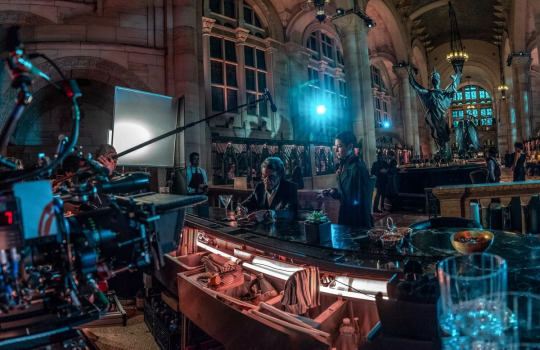
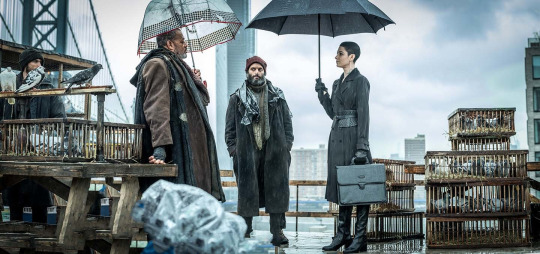

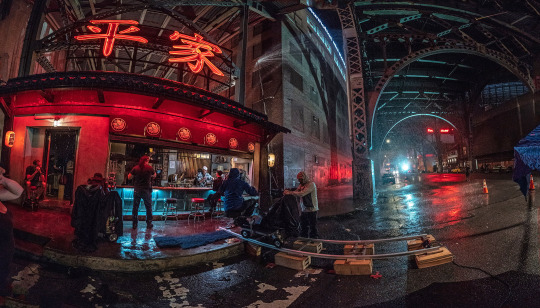
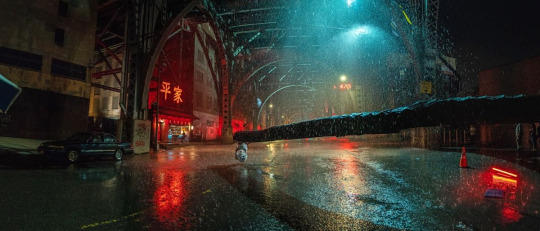
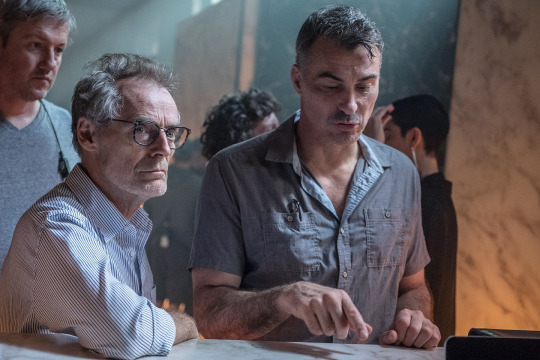
behind the scenes shots ft. akd as the adjudicator, from this article about the cinematography
“In Hollywood, action filmmaking was kind of looked down upon until The Matrix, and then people realized that action could also be part of the story,” [director] Stahelski notes. “I come from a place of loving dance and theater and fine art — action can be all of those things — and one of my favorite painters is Caravaggio.” When he was looking for a cinematographer for John Wick: Chapter 2, Stahelski recalls, “I asked myself, ‘Who paints with light?’ The answer is Dan Laustsen.”
In strictly cinematographic terms, Parabellum functions less like an action movie and more like a Hollywood studio musical. The film’s first battle is a close-quarters knife fight in an antique weapons shop, where the camera cuts from wide shot to wide shot, sustaining the action in long takes so that the audience can better appreciate the physical prowess of Reeves’ performance — an elaborate fighting style that combines Japanese judo and jujitsu, Brazilian jujitsu, Russian sambo, Filipino kali, and Muay Thai, more for the benefit of show than for self-defense.
“Ninety-nine percent of high-level stunt work is dance — not pirouettes, but how you move your body,” asserts Stahelski, who continues to train stuntpeople with Leitch through their company 87eleven. “I love the aesthetic of motion. A lot of our shots [in Parabellum] are lifted straight from Singin’ in the Rain and West Side Story. We’re mixing Buster Keaton and Charlie Chaplin with Hong Kong cinema from John Woo, Jackie Chan and the Shaw Brothers.”
“We wanted to go wider than Hollywood action films normally do and really show off the choreography,” Laustsen agrees. “When the camera, lighting and actors are all moving together, it really is a dance.”
“After we made Chapter 2,” Laustsen notes, “we discussed how we could make 3 even more visually powerful. The main setting was still New York, but we wanted to bring out the city even more forcefully. We decided to shoot all at night, with rain as much as possible. Rain is fantastic because it gives a third dimension to the picture, but it is a challenge to do it, especially in a city like New York.”
The Master Anamorphics’ low-distortion design also prevents dramatic, streaking lens flares, and so the technicians at Arri Rental in Secaucus, N.J., fashioned a flare filter — comprising three strands of nylon fishing line stretched across an empty filter frame — for the XT’s and Mini’s Internal Filter Modules. When a front-of-lens filter produces a flare, Laustsen observes, it “just looks like the light is catching on a piece of flat glass in front of the lens. It’s more beautiful when the flare comes from the lens itself” — and that’s the effect that was replicated with the behind-the-lens nylon lines. “With the filters inside the camera,” the cinematographer adds, “it was also easier for first assistant Craig Pressgrove to do the lens changes.”
The exterior of the Continental was shot in lower Manhattan, but the hotel’s interiors were filmed in downtown Brooklyn, in the former Williamsburgh Savings Bank tower — which now serves as an event space —whose glass-and-wrought-iron front doors open to a 128'-long vaulted banking hall with limestone facing, marble floors, carved teller stations, and a 63'-high ceiling supported by Romanesque columns. For its role as the Continental’s lobby, the hall was furnished by Kavanaugh with two round settees crowned with statues of the Roman war gods Bellona and Mars, a fully-stocked bar, and a lounge on the mezzanine.
Parabellum’s stages were located at Gold Coast Studios in Long Island, N.Y. The first of the production’s two notable stage-bound sets is the Continental’s terrace, for which the Rockefeller Center rooftop garden was used in Chapter 2. The schedule didn’t allow for much time to shoot Parabellum’s scene, which takes place at sunrise. “You cannot make the sun rise [for] a movie,” Laustsen notes wryly. “It’s one or two shots, and then you have daylight, and then you’re fighting to control the light.”
So, for more control, the scene was moved onstage, where the set was surrounded with a sectional 45'x350' bluescreen lit with SkyPanel S120s; a 120' black velour curtain was used to control blue spill coming from off-camera. Early-morning ambience was provided by 176 overhead SkyPanel S60s, and the light of the rising sun was simulated by a 20K tungsten Fresnel and a 24K Dino light with medium bulbs, both gelled with 1⁄2 CTS.
The other key set built at Gold Coast was the “manager’s office,” a labyrinthine two-story glass-and-steel structure meant to represent the top floors of the Continental, with a 270-degree view of the adjacent skyscrapers. It’s in this space that Wick and Zero ultimately face off mano a mano. “The concept was to create a space where everything is exposed, a place where there are no secrets,” Kavanaugh explains.
To help him integrate the lighting into the design of the set itself, Laustsen worked with a virtual-reality computer model based on Kavanaugh’s design. “Chad, Kevin and I had discussions about color — cool lights inside, warm light outside,” says the cinematographer, who wanted what he describes as an “organic” light element for both spaces. The art department therefore added a 35'x14' LED wall to the set’s second floor and a 28'x12' LED billboard to the rooftop; the latter was positioned between the glass structure and a 40'x440' Rosco SoftDrop that was backlit by 150 SkyPanel S60s through Magic Cloth sourced from The Rag Place.
Almeida and his rigging crew installed more than a mile of LiteGear Chroma-Correct RGB-Daylite LED LiteRibbon into the glass and steel set, using aluminum profile and plastic diffusers provided by Kavanaugh’s art department. Cues were orchestrated from an ETC Ion Xe console operated by Kent Arneson; Laustsen took advantage of that control to increase the intensity of the light over time — until the very end of the fight, when the two combatants are photographed primarily in silhouette against the LED walls.
Wick literally fights his way through the set — alternately smashing his opponents and being smashed through glass pedestals, walls and floors — until he comes face to face with his nemesis. “We filmed this sequence with a [Chapman/Leonard Hustler IV] dolly and a Libra head, a Steadicam, and a couple of crane shots [with a MovieBird 45 and Aerocrane jib],” Laustsen details. “We didn’t want to go handheld because of all the straight lines. It would be a much more powerful look for the film if the frame was always parallel to the set.”
“When we did bring in lights for the close-ups, we used Arri SkyPanel S60s and Astera AX1 LED tubes that we could attach virtually anywhere using magnets and clips,” Almeida adds. “The Astera tubes worked out great because they’re easy to hide, and if you saw a reflection, it just looked like the lighting that was built-in already.”
#all the pictures and quotes are neat & interesting....check out that article#further talk about color choices & tools & techniques....idk too much about film production stuff but i always think it's interesting#and like cinematography being pointed out & discussed in general lol as the end result & the process behind it#only one quote in there specifically mentions the adjudicator (not ft. here b/c it's just a quick plot point mention)#but others are included here b/c it's relevant. homemade lens flare? happens when their ride first swings up like Their iconique flair#didn't include quotes about the theater set used for when they show up walking down the aisle like augh!! anyways check out the article fr#asia kate dillon#the adjudicator
4 notes
·
View notes
Text
also ngl woke up feeling physically not so great (questioning the taco meat leftovers i ate last night rn tho they tasted fine enough at the time) so maybe the interview wouldn't have happened anyway
#text post#i have something by me for it but i am begging myself rn to not vomit#i hate doing it i don't care if it'll make me feel better please no#tw emetophobia#to be safe#i need to do something to be more productive today either prolific or filming in addition to the Big Cry#tho if the latter starts i might not get either of the former done but god why can't i just make both happen#i should be able to process trauma potentially bad meat and also get some side work done all at once what do you mean#i potentially can't do that lmaooo#im making jokes to make myself feel better it's gonna start working soon. i hope
3 notes
·
View notes
Text
I think the greatest prank I could ever pull is using my film & vfx resources to create a trailer for Goncharov and then leave it in an archive somewhere on 35mm film with no way to trace it back to me.
#goncharov#film#35mm#prank#some might say I can't do it now because I've posted about it#you underestimate my ability to cover my tracks#also I lack a crucial part of the production process#money#I mean I'm imagining a full virtual production with our LED wall#and deepfaking the actors#and whole deal
15 notes
·
View notes
Quote
Well, today [1998] in, particularly in television animation I suppose. Nearly all of us think "boy, you guys really have it easy". Because, each one of the directors, there was usually three, sometimes four directors, would direct ten pictures a year. Which is an hour. They were six minutes long and it was an hour long. So, that meant every five weeks, we'd put new one into work. We'd have five weeks on a story, five weeks on direction, five weeks on animation with four or five animators, and so on, right down to the ink-and-paint division, and so there would be three units doing the creative work and in the center of the building was the ink-and-paint division, and they worked for everybody. So, that meant that they were turning out a picture every two weeks.
Here's the terrible, and looking back at it, at least from anybody else from Warners', in motion picture and animation, I know Martin Scorsese and I've talked to Steven Spielberg and George Lucas, were all astonished that you could do a picture: lay it out and time to exactly six minutes and no editing, we had no editing to our pictures. You had to finish the story, without showing it to anybody, really [...] you time out the entire picture after the storyboard, the storyboards were not complete, they were just rough ideas and would be a bunch of gags. The director's job was to put them together into some kind of logic, solid logic, really, and to time the entire picture music bar sheets or on an exposure sheets [...] that would be six feet (four seconds). And, on that, you'd have Bugs Bunny walking, say 12 frames, if he was strolling, it be 12 frames. If he was in a hurry it be 6 frames for each step and so on, we learned to time it.
Chuck Jones on producing an animated short during the 1940s to 1960s
#chuck jones#quotes#animation#traditional animation#traditional animation process#animation process#animation production#termite terrace#looney tunes#short films#film production#Warner Bros#warner bros cartoons#frame rate#cartoons
13 notes
·
View notes
